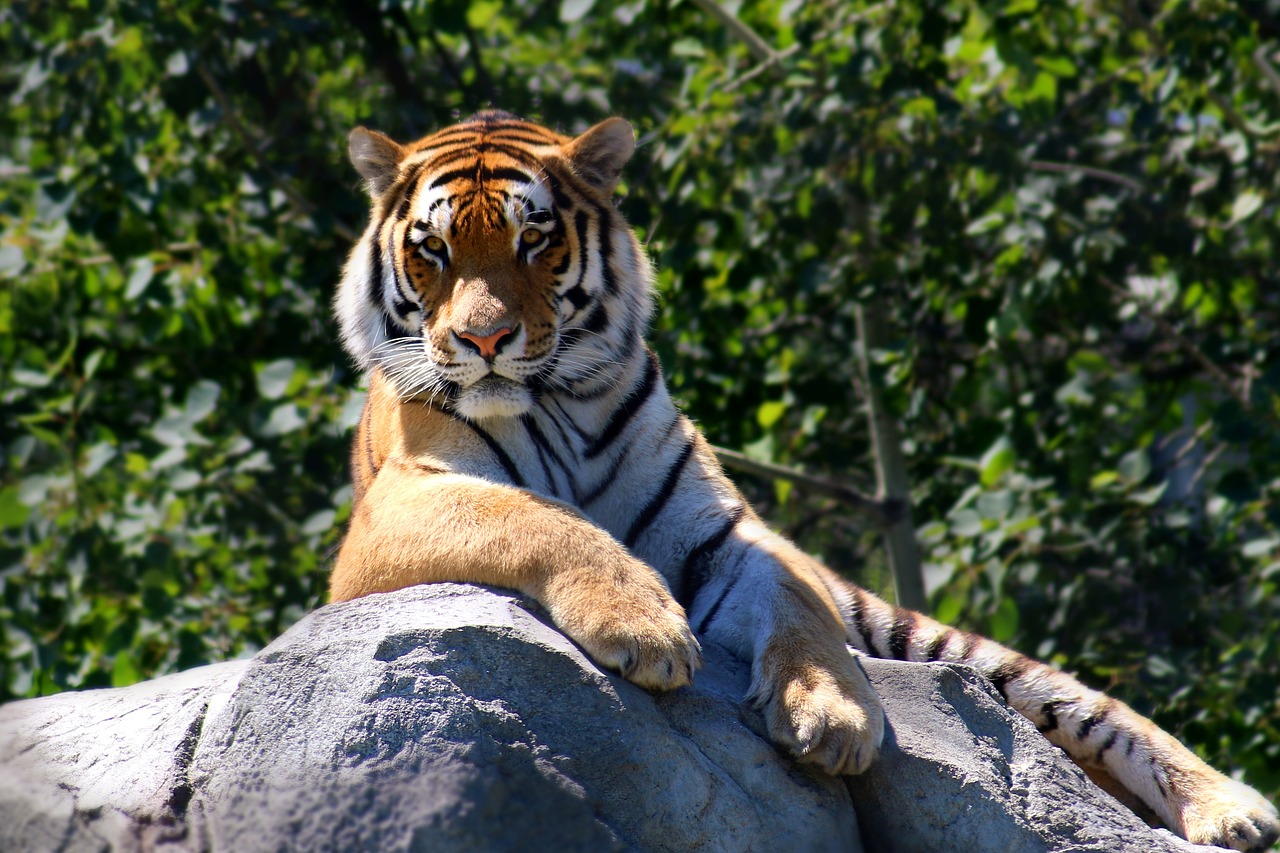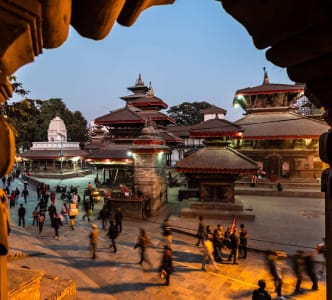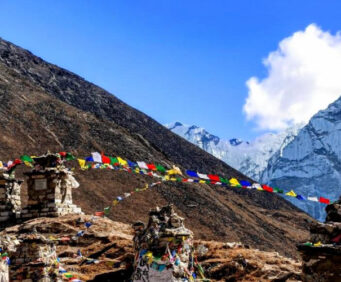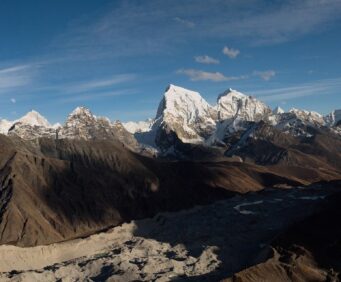
Best National Parks in Nepal
28th January, 2024 - Posted By: Himalayan AbodeSurrounded by the Himalayas and is home to eight of the world’s ten tallest peaks. Nepal is a landlocked nation that borders the two Asian giants, China and India. Its varied terrain includes sun and alpine forests, lush Terai plains, and the highest peak on Earth. The nation has breathtaking scenery in addition to a wide variety of adventurous riding, trekking, and hiking routes. In addition to offering thrills, the area is rich in a variety of wildlife, including plants and animals. So, here in this article, we will discuss about the Best National Parks in Nepal.
Enormous migratory and non-migrating avian species can be found in this diverse region of the nation. There are numerous national parks and conservation areas that help to preserve and conserve a range of endangered species, including the one-horned rhino, Bengal tiger, snow leopard, and other wild animals.
Shey Phoksundo National Park
The largest national park in Nepal is situated in the Trans-Himalayan area of northwest Nepal. It was created to protect a special ecosystem that supports a wide variety of plants and animals. The park’s varied elevations provide habitat for a wide variety of animals, plants, and seasonal wildflowers. This National Park offers a wide variety of breathtaking scenery. The majority of the park is located north of the Himalayan range, where the stunningly picturesque Phoksundo Lake, Nepal’s deepest lake, is situated. There are numerous Gompas (monasteries) and stunning glaciers in the nearby village of Ringmo, which has Tibetan influences. Near Phoksundo Lake, Thashung Gompa is said to have been constructed 900 years ago.
The park is significant for ethnobotany and has been protecting the habitat of threatened species, including Himalayan black bears, snow leopards, and jackals. The park is home to a variety of animals, including the Himalayan Tahr, Great Tibetan sheep, Himalayan blue sheep, musk deer, grey wolves, and many others. Regarding the vegetation, the Suligad Valley is home to numerous varieties of blue pine, spruce, hemlock, cedar, silver fir, rhododendron, and bamboo. So, it is one of the Best National Parks in Nepal. Along with many other species, the Tibetan Partridge, Wood Snipe, and Crimson-eared Rose sparrow can be found in the area.
Spring (March–May) and fall (October–November) are the greatest seasons. June marks the start of the monsoon, which is muddy and slick, while December to February brings snow and severe weather.
Khaptad National Park
This park is Nepal’s only mid-mountain national park, spanning 225 square kilometers. The parks have great religious significance as well because a large number of pilgrims go to the Lord Shiva temple and ashram. There aren’t many places to meditate, and those that do tend to radiate calmness and serenity. It is strictly forbidden to use tobacco products, drink alcohol products, or sacrifice animals.
This park is Nepal’s only mid-mountain national park, spanning 225 square kilometers. The parks have great religious significance as well because a large number of pilgrims go to the Lord Shiva temple and ashram. There aren’t many places to meditate, and those that do tend to radiate calmness and serenity. It is strictly forbidden to use tobacco products, drink alcohol products, or sacrifice animals.
Spring (March–May) and fall (October–November) are the greatest seasons. June marks the start of the monsoon, which is muddy and slick, while December to February brings snow and severe weather.
Langtang National Park
The park’s varied elevations provide habitat for a wide variety of animals, plants, and seasonal wildflowers. This National Park offers a wide variety of breathtaking scenery. There are additional sacred and pure lakes in the area, including Gosaikunda, Suryakunda, and Bhairav Kunda. The area is enhanced by the stunning Tamang heritage and Buddhist beliefs; Langtang National Park is home to numerous Himalayan natural and cultural treasures in Nepal. The Langtang range, which includes Yala Peak, Langtang Ri, and Langtang Lirung (7246) as its highest point, dominates the area.
Sal, vibrant Rhododendron Nepalese alder, oak, and hemlock may be found throughout the park’s subalpine forest. The critically endangered red panda is another reason for the park’s fame. The red panda’s ideal habitat is the bamboo forest. For numerous species, including musk deer, wild dogs, and Himalayan tahr, the meadows provide ideal habitat. There are also reports of 250 different bird species in the park, both migratory and non-migrating. So, it is one of the Best National Parks in Nepal
Spring (March–May) and fall (October–November) are the greatest seasons. In the highlands of Langtang National Parks, the winter months of December through February bring snow and severe weather. The monsoon season, which starts in June, is extremely slick and muddy.
Sagarmatha National Park
This area, which is home to glaciers, deep valleys, and breathtakingly beautiful mountains, is recognized as a UNESCO World Heritage Site. This place is even more beautiful because of the Sherpa culture. The famed monasteries like Tengboche and a few others are gathering places for celebrations and prayers, and the Sherpa people who inhabit this area are deeply entwined with the teachings of Buddhism.
The alpine and subalpine regions of the national park are home to forests made up of pine, hemlock, fir, juniper, and other plants. Red pandas, Musk deer, blue sheep, Himalayan tahr, Himalayan mice, and numerous other species are rumored to call the area home. There are approximately 188 bird species known to exist in the National Park, including species like the snow cock, blood pheasant, red-billed cough, impeyan pheasant, and others.
Traveling to the Everest region is most enjoyable in the spring (March to May) and fall (October to November). June marks the start of the monsoon, which is muddy and slick, while December to February brings snow and severe weather.
Makalu Barun National Park
The only national park in the world that is higher than 8000 meters and features a creative conservation concept that integrates community and management because locals take an active role in preserving the ecosystem. Locals are also encouraged by park management to actively participate in safeguarding and maintaining the woods and other natural resources that support their vibrant lives, as well as to maintain their rich cultural heritage. To protect, maintain, and expand the forest, the local people had to exercise strong leadership over grazing and forest guardianship.
The view of the skyline is filled with Himalayan peaks, such as Mt. Makalu (8,463m), the fifth-highest peak in the world and the fourth-highest in Nepal, which transitions from tropical forest to the Arun River and then mountains. Mt. Baruntse (7,129m) and Mt. Chamlang (7,319m). Peak Hill is Nepal’s Mera Peak (6,654m). Known for its astounding diversity of flora and fauna, the region is said to include 56 unique plant species. Among the animals that can be found here are snow leopards, red pandas, musk deer, and wild boar.
Spring (March–May) and fall (October–November) are the greatest seasons. June marks the start of the monsoon, which is muddy and slick, while December to February brings snow and severe weather.
Rara National Park
With a total area of 106 square kilometers, it is the smallest protected area in Nepal. Rara and Chhapru villages are located within the park. The highest point of the summit, Chuchemara peak (4039m), is located at an elevation of 2990 meters, home to the well-known lake Rara. Snow trout, the only species known to inhabit the glistening blue lake, call it home. A variety of migratory and non-migrating birds can be found in the area. People can appreciate the migratory birds during the winter. The lake’s surroundings are surrounded by vibrant, gorgeous scenery created by blooming Himalayan flora. So, it is one of the Best National Parks in Nepal.
The vegetation in this national park is sub-alpine and grows at high temperatures. Plants like pine, fir, rhododendron, hemlock, oak, and juniper are prevalent in that region. Mammals found in the area include red pandas, Himalayan tahr, musk deer, and Himalayan black bears. There are about 214 bird species identified in the park, with coots, snowcocks, red-crested pochards, gulls, and other noteworthy species among them.
April–May and September–October are the greatest seasons. June marks the start of the monsoon, which is muddy and slick, and winter brings snow and inclement weather. High passes are closed due to below-freezing temperatures and one-meter-plus heavy snowfall. Winters are hard.
Shivapuri Nagarjun National Park
The ninth national park of Nepal is located on the northern outskirts of Kathmandu, just 12 km from the city center. Shivapuri Watershed Development initially oversaw it, but subsequently it was designated as a national park.
Depending on aspect and height, the vegetation can include pine, oak, rhododendron, and other types. Mammalian species like the Himalayan Black bear, leopard, jungle cat, and rhesus monkey have all been observed in the park. In addition, 127 different types of mushrooms, 102 different species of butterflies, including several rare and endangered ones, and 177 different species of birds, including at least nine vulnerable species, can be found in the park.
Except for the monsoon, when roads are in poor condition, all seasons are pleasant in Kathmandu. For the remainder of the year, the weather is often neither too hot nor too cold.
Bardiya National Park
Home to 121 species of fish, 25 species of reptiles, and 53 species of mammals, the Karnali and Ghaghara rivers are birdwatchers’ dream come true and draw a large number of migratory birds. Watching them from a great distance in the most pristine and protected area of Nepal, which is the wilderness. So, it is one of the Best National Parks in Nepal. Situated on a 968 square kilometer land area in the western region of Province 5 of Nepal. The terai plain’s greatest and most pristine wildness is found in Royal Bardiya National Park. The park is made up of riverine forest, grassland, and forest for nearly three quarters. The park was created with the intention of preserving the ecology, the fauna that calls the area home, as well as other plants and their prey.
Whether or whether one is a nature enthusiast, dense subtropical forests, grasslands, and wetlands offer perfect habitats for mammals, birds, reptiles, amphibians, insects, and fluttering butterflies.
The optimum months to visit the park are February through June and October through November. It is not open all year round. There is a good likelihood of seeing Tigers from February to June. Monsoons are typically wet and slick, and the park is covered in plants in many areas.
Chitwan National Park
The Terai plain in Nepal is home to a natural and protected area that was included into the World Heritage site in 1984. It transports visitors to the heart of the natural world, where they can encounter a variety of rare and abundant species and get a firsthand look at their natural habitat. You may shoot them, of course, but only with a camera. The park was created with the intention of preserving the ecology, the fauna that calls the area home, as well as other plants and their prey.
home to a diverse range of plants, 68 species of animals, 544 (and counting) species of birds, 126 marine species, and 56 species of herpetofauna. The park is well known for its crocodile, Royal Bengal Tiger, and One Horned Rhino conservation and protection efforts. 22 other globally threatened species can be found in the park, including the severely endangered Bengal Florian, Slender-billed Vulture, White-rumped Vulture, and Red-headed Vulture.
The optimum months to visit the park are February through June and October through November. It is not open all year round. There is a good likelihood of seeing Tigers from February to June. Monsoons are typically wet and slick, and the park is covered in plants in many areas.
Parsa National Park
Situated in Nepal’s south central lowlands, it shares portions of the districts of Parsa, Bara, and Makwanpur. Additionally, the location is connected to Chitwan National Park. After being created as a wildlife reserve, the reserve was transformed into a national park in July 2017. The preservation of Asian wild elephants was the primary goal of this establishment.
Nearly 90% of the reserve is covered in vegetation, primarily tropical and subtropical sal forests. There are also species like cotton, silk, and khair. The commercially significant species of sabai grass thrives in the southern slopes of the Churia hills. A healthy population of endangered Asian wild elephants, Royal Bengal tigers, blue bulls, hog deer, striped hyenas, and numerous other species may be found in the park. The area is home to 500 different species of birds, including Paradise Fly Catcher, Giant Hornbill, Golden Backed Woodpecker, and many more. So, it is one of the Best National Parks in Nepal. There have been reports of several snake species in the park, including the banded karit, king cobra, common cobra, and python.
The optimum months to visit the park are February through June and October through November. It is not open all year round. There is a good likelihood of seeing Tigers from February to June. Monsoons are typically wet and slick, and the park is covered in plants in many areas.
Banke National Park
This is the newest protected area, demonstrating the government’s dedication to maintaining biodiversity across the landscape. Through a community forest in the southern region, the park is connected to the boundary that leads to Suhelwa Wildlife Sanctuary in India. Additionally, the location enters Bardiya National Park.
The region, which consists of sal forests, riverine forests, savannahs, and grasslands, is home to 124 different plant species, 34 mammal species, over 300 bird species, and 58 fish species. Sal, Khair, and Sishoo cover around 90% of the natural forest. In order to protect them, the park must prioritize protecting endangered species like tigers, striped hyenas, four-horned antelope, giant hornbills, Bengal Florian, black storks, crocodiles, and pythons.
The optimum months to visit the park are February through June and October through November. It is not open all year round. There is a good likelihood of seeing Tigers from February to June. Monsoons are typically wet and slick, and the park is covered in plants in many areas.
Shuklaphanta National Park
The area was first administered as a hunting reserve, then as a wildlife reserve, and finally as a national park. situated at Nepal’s most western and south-western region. Our reserve and the Indian state of Uttar Pradesh are separated by the Mahakali River, which is a significant Ganges tributary.
There are about 10 ectoparasite species, 24 mammal species, 350 bird species, 14 fish species, and biting flies. This national park, despite its tiny size, is home to a diverse array of species that are significant both domestically and internationally. Sal savanna, Sal woodland, and other vegetation that sustains the environment are included in the vegetation. So, it is one of the Best National Parks in Nepal.
The best time to visit is in the spring, which runs from February to April, when there are lower humidity levels and mild temperatures. The scenery is wonderful because of the flowers and vegetation that are in bloom. Summertime is often not ideal because it is excessively hot and muggy during the day in this area; nevertheless, mornings and nights are generally pleasant. The months of September through December are ideal for travel, and the holidays offer an extra special experience for your trip.
Recent Posts



